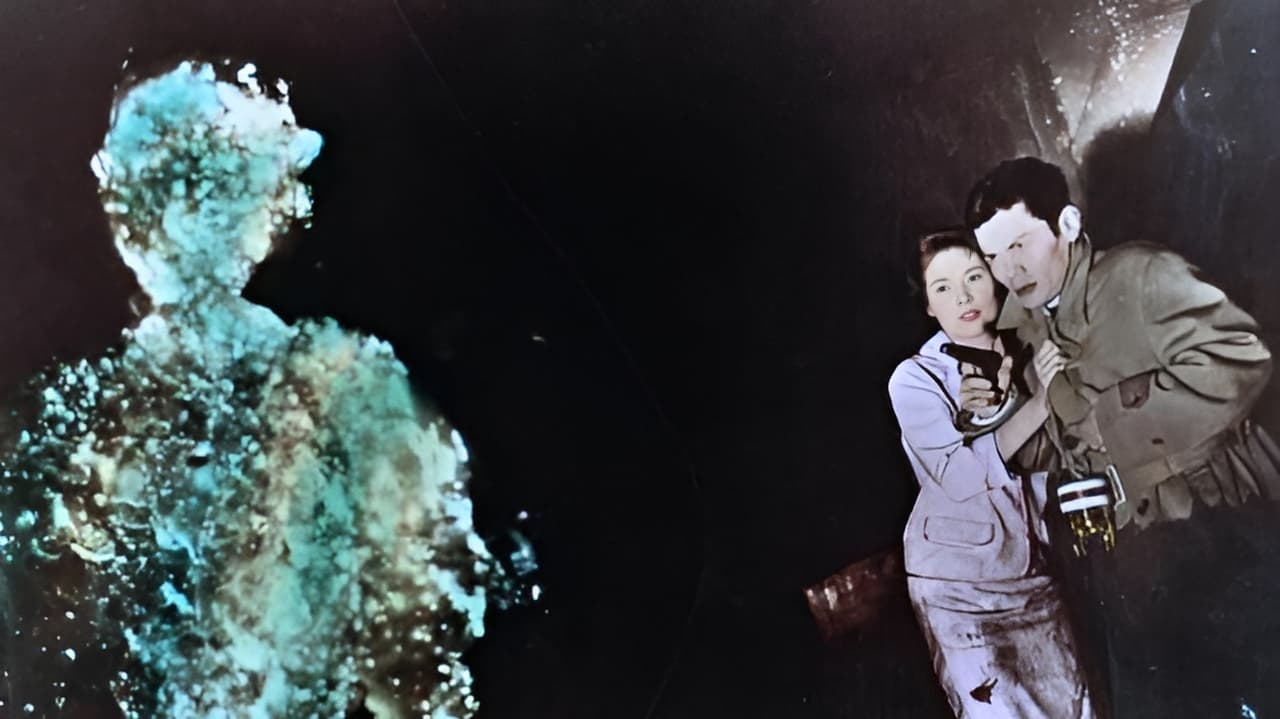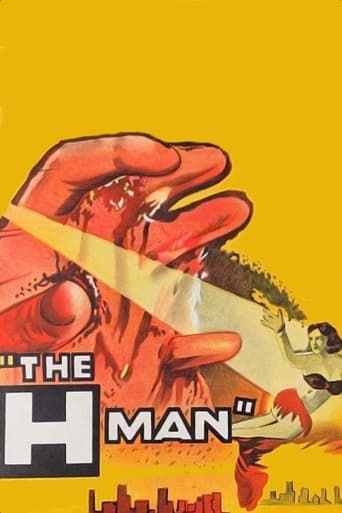

Good start, but then it gets ruined
... View MoreFantastic!
... View MoreThe tone of this movie is interesting -- the stakes are both dramatic and high, but it's balanced with a lot of fun, tongue and cheek dialogue.
... View MoreIt's a good bad... and worth a popcorn matinée. While it's easy to lament what could have been...
... View MoreIn the midst of a drug heist, criminal Misaki somehow disappears; his girlfriend, the nightclub singer Chikako, is thought to know something of his whereabouts and so she is pursued by both police and gangsters (the latter having owned the drugs Misaki stole). But what if Misaki really *had* disappeared, had, as it were, *dissolved* leaving only his clothes behind? Scientist Dr. Masada has a theory about the cause of such a horror: the effects of radiation from H-bombs have created a liquid monster, the terrible H-Man, and now that monster is coming to Tokyo . Director Ishiro Honda is best known in the West as the director of the first "Godzilla" movie, but he has a lengthy and varied body of work that is soon to get its due in the form of a biography co- written by Steve Rylfe and Ed Godziszewski; the latter presented a screening of "The H-Man" at Montreal's FantAsia Festival 2017 and preceded it with a talk about the man, his life, recurring themes in his films and more. Really interesting information, and it made this film, similar in ways to many such radiation cautionary tales of the 1950s, resonate that much more deeply. I look forward to discovering more of Mr. Honda's films!
... View MoreIshiro Honda directed this unusual film, which combines plot elements from both the crime and science fiction genres. A wanted criminal mysteriously disappears from a crime scene, leaving behind only his clothes. Japanese police track him by following his wife, who does lead them to the criminal, who has somehow mutated into a hydrogen creature who can change into a blob-like creature at will, and who can be traced to a mysterious ghost-ship anchored in the harbor that was exposed to unknown radioactive fallout. Can this menace be stopped? Good F/X, but story drags, and differing genres clash unsuccessfully in forgettable film.
... View MoreAs a first grader at age 6, I felt underpriveledged. All my class mates would come to school on Mondays bragging about whatever Saturday movie experience they had. Most of the time it was a Hercules, or Sinbad or other epic tale and their comments were vivid. But when the conversation revolved around a horror movie their version turned out to be a tease. I could tell that the real deal with horror pictures was to experience it personally. Here was the conumdrum, I wasn't allowed to go the the show without an adult and I didn't want to be seen by my friends with a parent. Well finally an aunt stepped up and volunteered to take me. In that darkened theater, finally seeing a horror movie for the first time, my anticipation was peaking: that is until the H Bomb went off and the tale of this insidious monster began. Needless to say my horror fascination came full circle by the end of the first reel, and the experience left me anxious for many, many, months! Thinking back to that screenining I feel that the H man was a landmark movie and probably generated the same type emotional response as the radio broadcast of War of the Worlds had a generation earlier. A remake would be awesome with todays technology, looking forward to it, and even a peak back to the past with the original version would be nice.
... View MoreLike many other posters, I saw this film as a young boy and it gave me nightmares for weeks (maybe even months)! Luckily, my older brother finally convinced me that the "liquid creature" would not survive a swim from Japan to the United States and I was able to sleep again.I suspect that the modern age's Freddies, Jasons and Leatherfaces would not hold a candle to the effect that this film had on an impressionable youth back then. Perhaps the very fact that the monster had no tangible qualities and could theoretically be any puddle of water you came across was what gave it its fright value.It would certainly be interesting to see how a remake of this would play today.
... View More